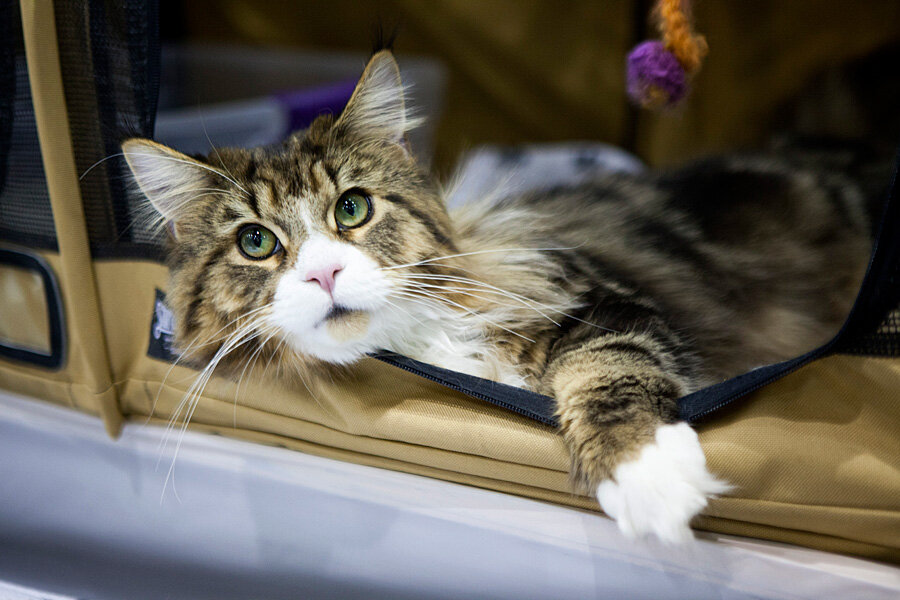
Unraveling the Feline Mystery: Why Are Cats So Choosy?
Cats have long been associated with their selective eating habits, leaving many pet owners puzzled and frustrated. From turning up their noses at perfectly good food to begging for treats only to ignore them moments later, feline pickiness can be a perplexing phenomenon. However, there is a scientific explanation behind their finicky behaviour that goes beyond mere preference or stubbornness. Understanding the underlying reasons for a cat’s selective eating habits is not only crucial for maintaining their health but also provides insight into the intricate complexities of these enigmatic creatures. In this article, we delve into the fascinating science behind why cats are such discerning eaters and explore how evolution has shaped their dietary preferences over thousands of years.
Understanding a Cat’s Picky Eating Habits
Cats are notorious for being picky eaters, and it can sometimes be frustrating for their owners. However, understanding the reasons behind their finicky behaviour can help us provide the best care for our feline friends. Firstly, cats have a highly developed sense of taste and smell, which means they are more sensitive to certain flavours and odours than humans. What may seem unappetising to us might be repulsive to them. So, if your cat refuses to eat a particular type of food, it could simply be because they find the scent or taste unpleasant.
Secondly, cats are creatures of habit and routine. They prefer consistency when it comes to their meals and may become reluctant to try new foods or make sudden changes in their diet.
The Evolutionary Reasons for Selective Eating
Cats are known for their finicky eating habits, often turning up their noses at certain foods while eagerly devouring others. This selective behaviour may seem puzzling to cat owners, but it actually has deep evolutionary roots. As obligate carnivores, cats have evolved to be highly specialised hunters with specific dietary requirements. Their ancestors were solitary hunters who relied on a diet consisting almost entirely of meat, and this preference has been passed down through generations.
One reason behind cats’ selective eating habits is their need for essential nutrients found primarily in animal tissues. Meat provides crucial amino acids like taurine and arginine that are essential for proper feline health. Cats lack the ability to produce these amino acids themselves, so they must obtain them from their diet.
Sensory Factors Influencing Food Preferences
Cats, like humans, possess a highly developed sensory system that plays a crucial role in determining their food preferences. Various sensory factors contribute to their decision-making process when it comes to choosing what they eat. One of the primary factors is smell; cats have an incredibly acute sense of smell that allows them to detect even the faintest odours. This keen olfactory ability helps them identify and differentiate between various types of food, influencing their preferences based on scent alone. Whether it’s the aroma of fresh fish or the whiff of a savoury meaty treat, cats rely heavily on scent cues to make their dining choices.
In addition to smell, taste is another vital sensory factor that shapes a cat’s food preferences. Cats possess specialised taste receptors on their tongues that are attuned to specific flavours such as sweetness, saltiness, and bitterness.
Behavioral Factors that Affect Feline Feeding Behavior
Cats, like any other animal, have their own unique feeding behaviours that can be influenced by various behavioural factors. Understanding these factors is crucial for cat owners to ensure their pets’ overall well-being and nutrition. One significant factor that affects feline feeding behaviour is stress. Cats are highly sensitive creatures, and any changes or disruptions in their environment can lead to increased stress levels, which in turn can affect their appetite. Stressors such as moving to a new home, the presence of unfamiliar humans or animals, or loud noises can cause cats to lose interest in food or decrease the amount they consume.
Another behavioural factor that impacts feline feeding behaviour is social dynamics. Cats are known for their independent nature, but they also have complex social structures within multi-cat households. Dominance hierarchies often develop between cats sharing the same space, which can influence feeding patterns.
Health Issues and Dietary Preferences in Cats
Cats are notorious for being picky eaters, often turning their noses up at certain foods. However, understanding the dietary preferences of our feline friends is crucial for maintaining their health and well-being. As obligate carnivores, cats have specific nutritional needs that must be met to prevent various health issues.
One common problem in cats is obesity, which can lead to a range of other health issues, such as diabetes and joint problems. It is essential to provide cats with a balanced diet that includes high-quality protein sources and controlled portion sizes. Additionally, some cats may develop food allergies or sensitivities, causing gastrointestinal upset or skin problems. Identifying and eliminating these allergens from their diet can alleviate these issues and improve overall health.
Furthermore, another significant concern in cat nutrition is urinary tract health. Cats are prone to developing urinary crystals or stones due to inadequate water intake or imbalanced diets.
Tips for Dealing with a Finicky Feline
If you’re a cat owner, you’re probably aware of just how finicky these furry creatures can be. From their unpredictable moods to their selective eating habits, cats can be quite challenging at times. However, with a few handy tips up your sleeve, dealing with a finicky feline doesn’t have to be a daunting task.
First and foremost, it’s crucial to understand that cats are creatures of habit. They thrive on routine and familiarity, so creating a consistent schedule for feeding and playtime can go a long way towards keeping your kitty content. Moreover, when it comes to food preferences, experimenting with different flavours and textures is essential. Cats can quickly get bored with the same meal day after day, so introducing variety will help stimulate their appetite.
Another key tip is to provide your cat with an enriching environment.
In conclusion, the mystery of cat palates has been unraveled through scientific research and observation. We now understand that cats have a highly specialised palate that allows them to taste certain flavours and textures more intensely than humans. This knowledge not only sheds light on their dietary preferences but also helps us create better and more nutritious food options for our feline companions. As cat owners, it is important to consider their unique palate when choosing their meals and treats, ensuring that their nutritional needs are met while also providing them with satisfying and enjoyable dining experiences. By continuing to study and decode the enigma of cat palates, we can deepen our understanding of these fascinating creatures and enhance their overall well-being.

